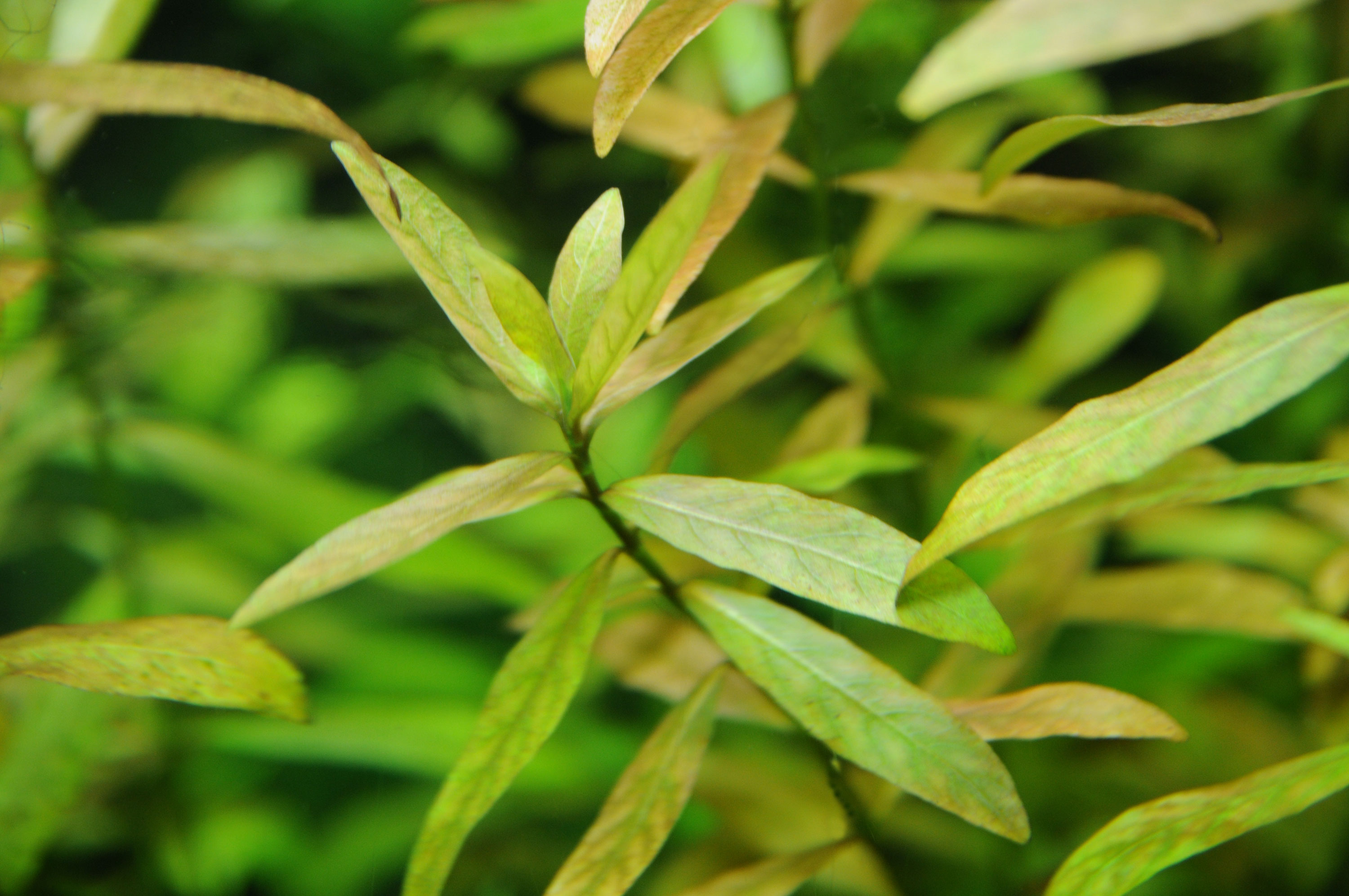Trace elements for aquatic plants
Essential Elements
|
C |
O |
H |
|||||
|
N |
P |
S |
B |
Cl |
(Si) |
(Se) |
Non-metals |
|
K |
Ca |
Mg |
(Na) |
Metals |
|||
|
Fe |
Mn |
Zn |
Cu |
Mo |
(Co) |
Ni |
Heavy metals |
At present, silicon, sodium and cobalt have been proved necessary for only a few cultures; they are otherwise considered to be useful, as are - with some restrictions - aluminium and selenium.


Boron
is an essential trace element for all the higher plants. Even plants with a very low boron requirement need it for reproduction at least.
Plants react to a lack of boron with typical symptoms: the tips of the shoots die off, the root system shrivels (in beets, for example, it can lead to the well-known heart and dry rot, with the young leaves and the head of the beet dying off), the tissues become brittle.
Measurements in individual cells taken with the aid of a cell pressure probe show that these reactions are secondary reactions. As a primary reaction, however, a temporary loosening of the cell membrane can be observed only a few minutes after the interruption to the supply of boron.
Of the greatest importance is the cross-relationship to the calcium metabolism. Boron in the apoplast is sometimes a negatively charged ester-like complex. It is therefore to be expected that in conditions of deprivation due to the absence of these charges the relationship of bound to free cations (in particular to calcium) is changed, which can as a consequence influence enzyme activity. Research done on apoplast solutions shows changes in the free calcium a few minutes after interruption of the boron supply and indicates that boron complexes are additionally stabilised by calcium.
Boron is particularly necessary in fast-growing parts of plants. Using boronate-coupled fluorescent dyes, it has been possible to research the distribution of boron-binding ligands in vivo. Research shows a heterogeneous longitudinal and latitudinal distribution of such ligands throughout the root. Especially high fluorescent intensities were found in the areas of the most intensive vertical growth.
Boron is mostly absorbed as undissociated boric acid and is highly dependent on temperature: the only competitive effect is that of hydroxyl ions OH-, but not of the anion of the mineral nutrients (nitrate, phosphate, sulphate). Limited by the relatively good fat solubility of boric acid, the mobility of boron within the plant is greatly restricted; this means that the tissues most dependent on an optimum supply of boron (the tips of roots and shoots) are the first to suffer deprivation.
Chloride
Is an essential micro-nutrient, even if the actual content within the plant is often quite high. Young, growing parts of the plant are often very rich in chloride. There, the chloride is to be found mostly in the vacuoles (responsible on average for 20 % of osmotic pressure).
The importance of chloride lies in its function as an osmotic regulator, with a definitive influence on turgor pressure and the stomata mechanism. Chloride ions are involved in photolysis of the water in the photosystem II (Hill Reaction) as co-factors of an enzyme containing manganese. Chloride is also of some importance as a co-factor in asparagine synthetase (asparagine plays a part in some plants as a long-haul transporter of nitrogen). In addition, further non-specific effects on other enzymes are known.
Symptoms of chloride deficiency have as yet rarely been observed in outdoor conditions, although they can easily be provoked in nutrient solution experiments. The symptoms of deficiency are then very similar to those of manganese deficiency.
Copper
Copper is absorbed as Cu2+ ions or in the form of chelates. A marked antagonism exists between copper and other heavy metals, primarily iron and manganese. High levels of copper can therefore induce a deficit of iron and/or manganese.
The most important function of copper is the involvement of enzymes containing copper in different redox systems.
The fact that 70 % of the total copper is contained in metabolically active leaves allows us to assume that it is involved in photosynthesis. The copper protein plastocyanin is formed with the participation of phenol oxidases containing copper. It is involved in the transfer of electrons in photosystem I by means of a reversible transfer from Cu+ ![]() Cu2+ + e-. In some plants, Cu2+ ions can take on a similar function to Mn2+ ions in the photolytic splitting of water.
Cu2+ + e-. In some plants, Cu2+ ions can take on a similar function to Mn2+ ions in the photolytic splitting of water.
Other enzymes with copper content can be found mainly in the phenol metabolism, in the form of various phenol oxidases (tyrosinase, diphenoloxidase, laccase etc.). With a change of oxidation level they catalyse the phenol ![]() quinone reaction.
quinone reaction.
The ascorbic acid oxidase (ASO) catalyses the reaction ascorbic acid ![]() dehydroascorbic acid using glutathione and thereby contributes to the regeneration of the tissues' own antioxidative systems.
dehydroascorbic acid using glutathione and thereby contributes to the regeneration of the tissues' own antioxidative systems.
It is also involved, among other processes, in lignification (storage of lignin), in alkaloid synthesis, in reduction of nitrate and oxygen radical reduction (superoxide dismutase).
Nickel
Ni(II) ions are easily absorbed, competing with other bivalent cations (Ca, Mn, Fe, Zn).
Nickel is the metal component of the enzyme urease and also certain hydrogenases in bacteria and legumes. Nickel deficiency induces urea toxicity, which can lead to “burns” and inhibits protein synthesis.
Non-proven essential elements
Subsequently, elements with undetected essentiality are discussed.
Silicon
Silicate anions can be enabled by their high degree of affinity to iron/manganese oxides and hydroxides to mobilise phosphate anions absorbed there.
The absorption takes place mostly passively in the form of the undissociated acid.
Within the plant, silicic acid is relatively difficult to move and is found either in amorphous form or as a galactose ester in the cell walls of the epidermis in monocotyledones, but inside the cells and in the plant hairs in dycotyledones.
Silicon is considered essential for certain cultures (e.g. rice) and beneficial for others.
Specific physiological functions have been sought for some time, but with little success.
Silicone is certainly involved in the stabilisation of cell walls. Silicone deficiency leads to an inhibition of phosphate storage in the ATP and sugar phosphates and also in lignin biosynthesis.
A good silicate content increases the tolerance of manganese by inhibiting the absorption of iron and manganese.
Tin
There are no references to tin in Amberger.
An old Cosmos volume (Herrmann Römpp, Spurenelemente, Kosmos, 1954, Stuttgart, Franckh'sche Verlagshandlung) mentions a so-called “Nutrient Solution A - Z” for a complete supply of trace elements according to R.D. Hoagland (1884 - 1949), which among other substances contains tin (II) chloride in small quantities.

